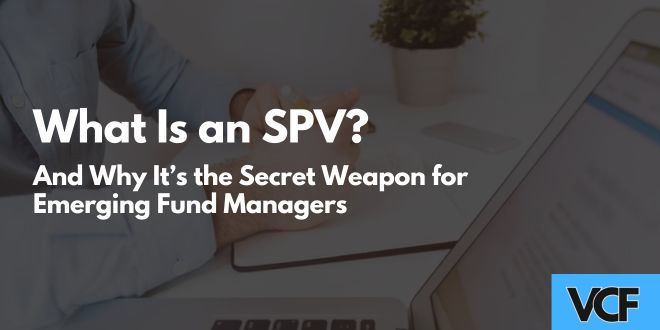You want to raise a fund, not a headache. The good news is that many angel limited partners are curious, open to new managers, and want you to win. The less-good news is that they sift through a sea of pitch decks every month.
To stand out, you need clarity, proof of discipline, and a touch of spark. This article lives under the Venture Capital Funding topic, so we will speak plainly about what persuades personal investors who back funds, and how to package your story so it lands.
Understanding Angel LPs
Angel LPs are people first, allocators second. They are usually entrepreneurs or operators who enjoy spotting talent early. They invest their own money, so they care about downside as much as upside. They also like access to networks, thoughtful updates, and the sense that their capital is working. Picture a skeptical friend who roots for you while asking tough questions, and you are close.
How They Evaluate GPs
Evaluation starts with fit. Is your strategy obvious in one sentence? Do your background and network create a repeatable edge? Are you focused on a slice of the market that is neglected or inefficient? After that, they scan for coherence. Your thesis, portfolio construction, and pipeline should line up like gears. If one gear slips, the machine groans. They are not hunting for magic, only for consistency that survives follow-up questions.
Crafting a Crisp Fund Thesis
A thesis should be precise enough to steer decisions but wide enough to allow creativity. If it feels like a horoscope, you went too broad. If it reads like a PhD abstract, you went too narrow. The sweet spot says what you invest in, why it is mispriced, and how you intend to win. It should fit in a paragraph that an intelligent outsider can repeat.
Market Edge and Why It Exists
Edge is not a generic claim about hustle. It is a structural reason you will see and select better. Maybe your deal flow springs from a community you have served for years. Maybe you can evaluate technical risk faster because you built similar products. The reason must be specific and verifiable. If a stranger could copy your pitch after two coffees, it is not an edge.
Check Size, Stage, and Ownership Targets
Angel LPs want to know your comfort zone. Pre-seed, seed, or early A. Initial checks of a certain size with reserves for follow-ons. Ownership ranges that line up with your model. If you say you target lead positions, your pipeline should show founders who treat you as a first call. If you plan a collaborative approach, show co-investors who respect your judgment. Precision beats poetry here.
Team and Track That Convince
Titles impress nobody if the work is fuzzy. Show how each person contributes to sourcing, diligence, and post-investment help. Reveal the cadence of your team’s decisions. Weekly pipeline reviews, documented memos, and clear reasons for passing are signals of discipline. Even if your track is emerging, you can demonstrate pattern recognition. Consistency is a track record in progress.
Evidence of Sourcing and Selection
You need receipts. Not glossy anecdotes, but proof that you see deals early and pick well. Share inbound from warm founders, referrals from scouts, and hit rates by channel. Explain your filtering rubric. If you lean on technical diligence, surface your expert bench. If you lean on customer calls, state how many and the key questions. Show the factory, not the showroom.
Portfolio Construction Discipline
Portfolio design turns intuition into math. LPs care about position count, average and median check sizes, reserve ratios, pacing, and expected dilution. Show a realistic loss rate and what wins must look like for the model to work. Articulate base, upside, and downside cases. If your plan survives arithmetic, your narrative earns credibility.
The Mechanics LPs Inspect
Even the coolest thesis fails without clean mechanics. Angels check the agreement, fees, carry, and your own contribution. They look at who administers, who audits, where the cash sits, and how marks are set. They also want to know how you avoid conflicts and report. Getting this right signals maturity.
Economics, Fees, and GP Commit
Spell out management fees over time, how they step down, and what they cover. Be transparent about carry and hurdles, if any. State your personal commitment with context. If the number looks small, explain how you align through foregone salary, recycling, or fee reductions. Alignment is the melody, math is the beat.
Governance, Custody, and Compliance
Outline roles for the advisory committee, decisions that trigger consultation, and how you document them. Name your custodian and administrator, confirm annual audits, and note your policies on side letters, material nonpublic information, and personal trading. A tidy back office calms anxious minds.
Reporting and Transparency
Quarterly letters with portfolio highlights, material changes, and cash flows are table stakes. Share a cadence for calls. Provide a simple dashboard with capital called, remaining commitments, and TVPI and DPI once relevant. Explain your valuation policy so marks do not surprise anyone.
Pipeline and Early Momentum
Momentum reassures. Angels do not expect a full portfolio on day one, yet they want proof that founders know you and take your calls. Offer a view of your funnel by source quality. Show signed notes or side letters when appropriate. If you have soft circles, describe them carefully. This train is moving fast.
Process and Materials That Work
Great materials make conversations easier. Treat the deck as an agenda, not a novel. Lead with thesis, team, and model, show portfolio construction, and add a short pipeline snapshot plus one page on mechanics. Keep the data room labeled and complete, with legal docs, policies, service agreements, sample reports, and a simple calculator that demonstrates how outcomes flow through the model. Fewer clicks, faster trust.
Common Red Flags
Smart angels notice patterns, and they notice them quickly. If your pipeline does not match your thesis, if you chase every hot theme, or if you rely on big but irrelevant numbers to signal traction, they will pass. Be explicit about what you will do and what you will avoid, and replace fluff with signals. Finally, explain how you mark positions between rounds and when you write down. No one expects perfection, only fairness.
Closing Capital Efficiently
Raising a fund is a process, not a scavenger hunt. Build a target list that matches your thesis and stage. Stage your outreach, track conversations, and keep a clean funnel. Cluster soft commitments so you can announce real progress. Follow up with persistence.
Negotiating Side Letters
Side letters are normal. Standardize what you can, such as information rights and fee breaks for early backers. Keep custom terms narrow and consistent with compliance. Never trade economics for speed if it will haunt you later. Clean agreements age well.
Conclusion
Angel LPs want a manager who is clear, prepared, and honest about the work. They look for a crisp thesis, a real edge, and a buildable model. They test your discipline through portfolio design, mechanics, and reporting. They watch how you run a process, organize materials, and keep momentum.
If you show coherence from thesis to pipeline to operations, while respecting their time and intelligence, you will feel the room tilt in your favor. Add a steady voice, short feedback loops, and genuine alignment, and your raise becomes less of a maze and more of a map.








